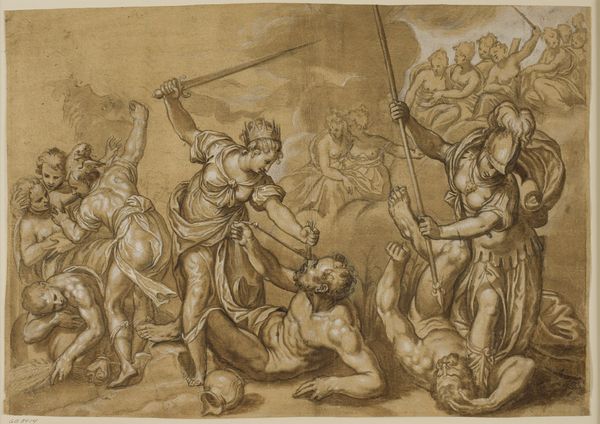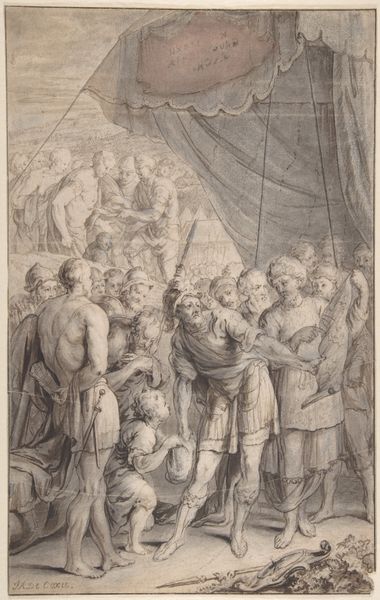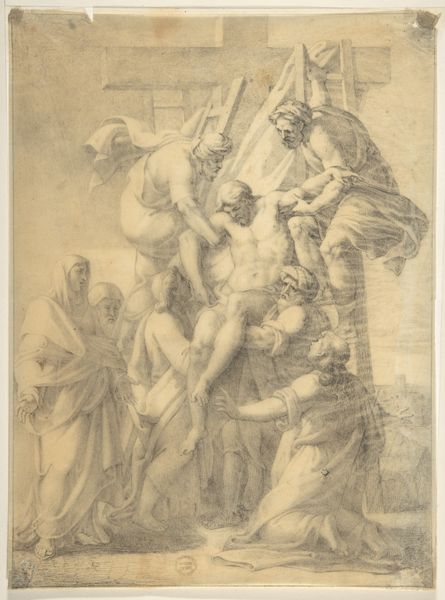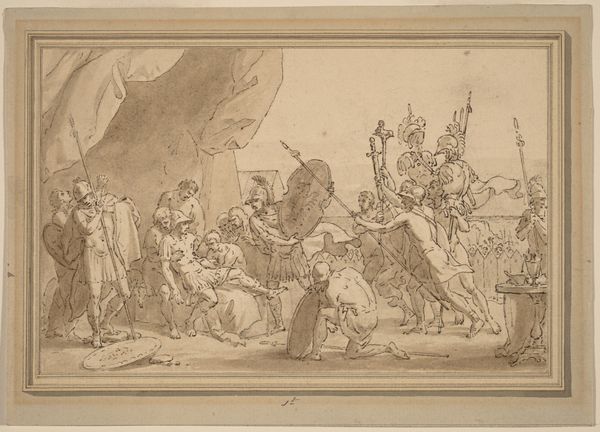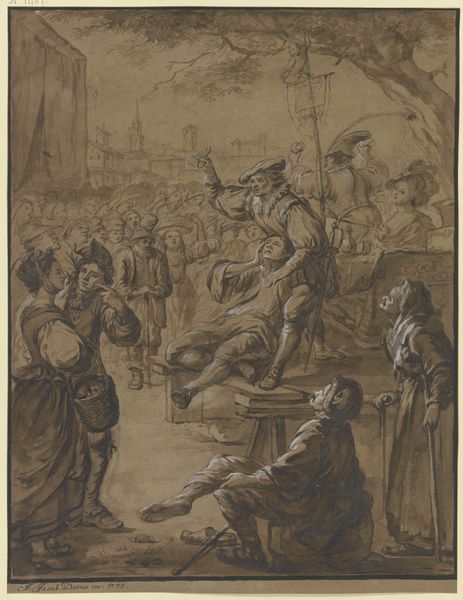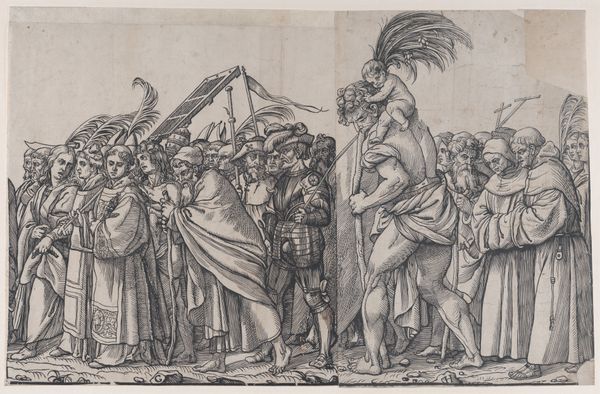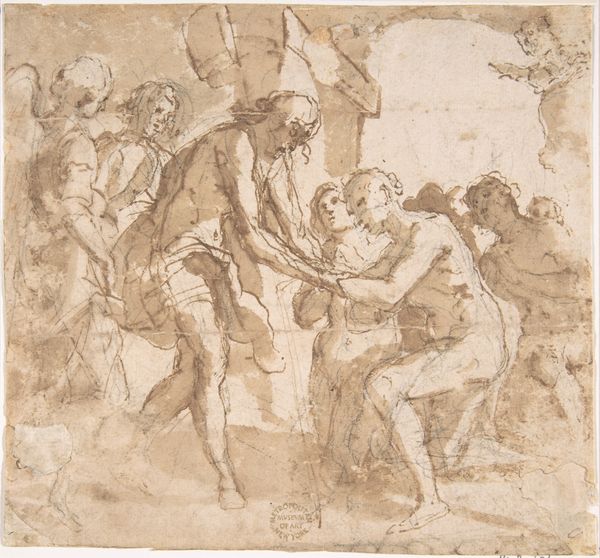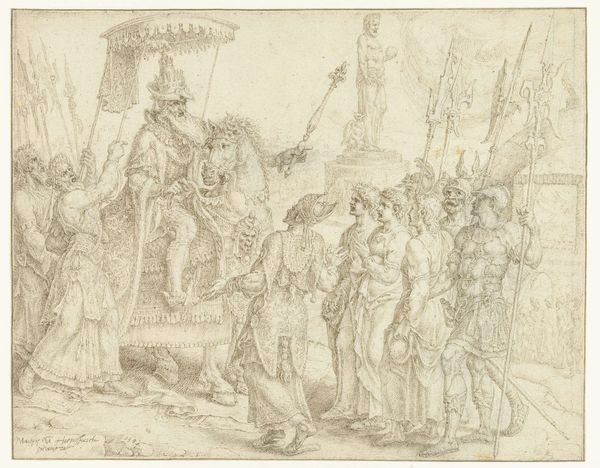
Martydom of Saint Andrew (recto); Head of a Woman (verso) 1600 - 1700
0:00
0:00
drawing, print, paper, pencil
#
drawing
#
narrative-art
# print
#
pencil sketch
#
figuration
#
paper
#
11_renaissance
#
pencil drawing
#
pencil
#
history-painting
#
academic-art
Dimensions: 10-1/8 x 9-5/8 in. (25.7 x 24.5 cm)
Copyright: Public Domain
Editor: This drawing, "Martyrdom of Saint Andrew," dates back to sometime in the 17th century and the artist is, unfortunately, anonymous. The sketch, in pencil, presents a harrowing scene, doesn't it? How do we begin to interpret the layers of historical and cultural context woven into this piece? Curator: Indeed. The scene itself offers a glimpse into the public spectacle of religious martyrdom, a potent tool in shaping religious and political landscapes of the time. What strikes you about the crowd’s reaction? Editor: There’s a real mix of emotions, or maybe a lack thereof? Some seem distressed, others detached, almost like bystanders at an official event rather than witnesses to someone's execution. Curator: Precisely. Consider the socio-political function of such depictions. The Church, or other powers, often commissioned such art. The visual narratives of martyrdom reinforced societal control and the acceptance of established authority by dramatizing consequences and projecting moral righteousness. Notice how the artist has staged Saint Andrew in a way that encourages our gaze. Editor: It’s like the drawing wants to invoke certain feelings, fear or awe. Do you think art like this truly moved people, or did it mainly serve the interests of the powerful? Curator: It’s a complex interplay, isn’t it? While these images could incite religious fervor and obedience, they might have also been seen as propaganda by some. Examining the ownership history of similar works – who commissioned them, where they were displayed – gives clues about the intentions behind their creation and the social function they served. The 'academic art' style in the tags highlights this aspect even further. It underscores that its purpose might have been as a social tool as well as artistic statement. Editor: So, by exploring its history, its commissioners, and its audience, we get a much fuller picture of the drawing itself and how art operates in society? Curator: Exactly! It transforms from a simple drawing into a window onto the power dynamics of its time. Editor: I see it now; the martyrdom isn’t just the subject; it’s part of a bigger story about how art shapes and reflects society. Thanks for pointing that out.
Comments
No comments
Be the first to comment and join the conversation on the ultimate creative platform.


